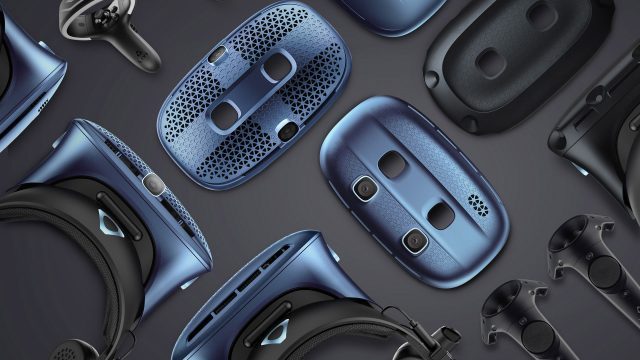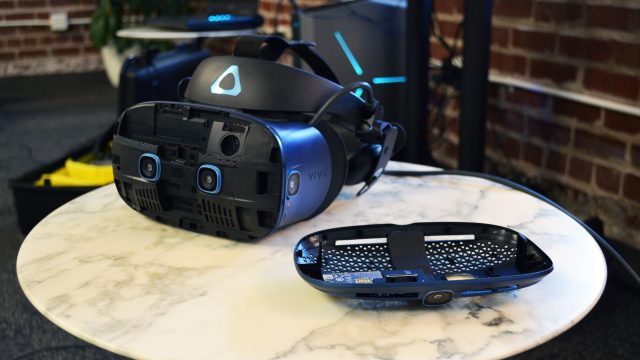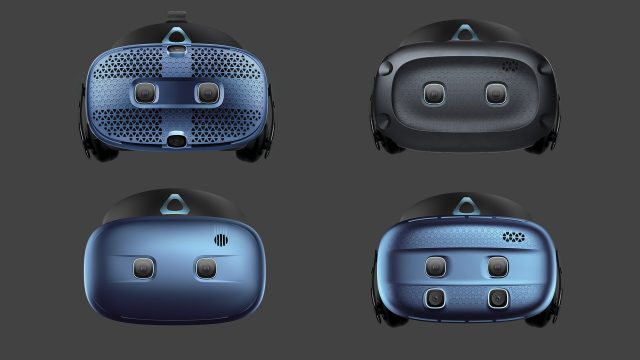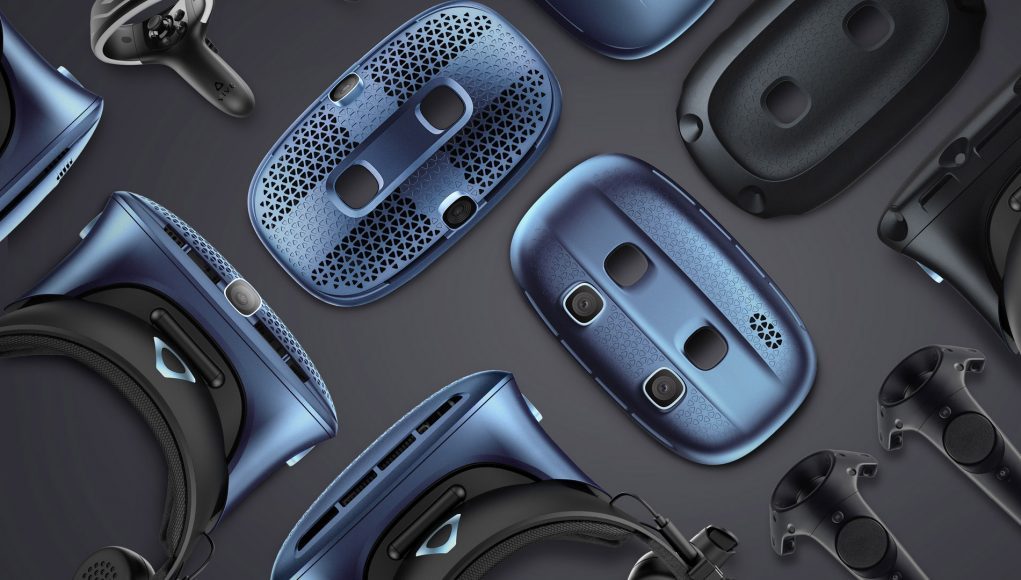With the re-introduction of the company’s Cosmos VR headsets with four different variants, HTC’s Vive lineup has become a confusing mess with 11 different headset packages to choose from. Even when just considering the Cosmos lineup itself, the company’s approach to ‘modularity’ makes little practical sense.
Update (March 5th, 2020): We reached out to HTC with an opportunity to respond to the critiques outlined in this opinion piece. We’ve added their feedback to the end of the article below.
Since this article was original published, HTC also announced changes to their Vive Pro lineup which will take effect later this year; the article addresses the public-facing marketing as of the original publishing date.
Original Article (February 28th, 2020), Updated: While HTC started out as a strong player in the consumer VR space, the last few years have seen a steady decline of the company’s prominence. Following the launch of its newest PC VR headset, Vive Cosmos, late last year, usage of the headset on Steam has amounted to little more than a drop in the bucket, and done nothing to curtail the collective decline of HTC headsets used on the platform, which have fallen from 43% of monthly-connected headsets in January 2019 to 30% in January 2020.
Compared to competitors Valve and Oculus, HTC is the only one of the three which doesn’t control a major content distribution platform for VR; the need to derive most of its profit from hardware sales may well be the reason why the company has had trouble competing on price.
But beyond questionable pricing, HTC has had equal trouble maintaining clarity in its headset lineup, and its latest moves may have only made things worse. Right down to the structure of the company’s headset naming scheme (where ‘Vive’ could refer to the company’s entire VR division, all of its headsets, or a single headset), its headset lineup has become overwhelming.
Here’s the company’s 11 different headset packages that it is presently marketing for sale now or in the near future; this doesn’t include the two Vive Proton prototype headsets announced last week.
- PC
- Vive
- Vive Pro Starter Kit
- Vive Pro Full Kit
- Vive Pro McLaren Limited Edition
- Vive Pro Eye
- Vive Cosmos Play
- Vive Cosmos
- Vive Cosmos Elite
- Vive Cosmos XR
- Standalone
- Vive Focus
- Vive Focus Plus
Let’s ignore the fact that HTC has been wishy-washy on whether the ‘Pro’ line is meant for enterprises or for consumers—let’s just pretend we’re a potential customer looking either to buy into VR for the first time, or upgrade from a first-gen headset, and let’s say we’re just looking at Cosmos, which is the company’s latest consumer-facing headset.
Cosmos Modularity Makes No Sense

With Cosmos, HTC says it’s all about modularity. With four variants of the headset, consumers can pick the one that’s right for them (oh wait, one of the variants of the company’s consumer headset line, Cosmos XR, is meant for developers… so just three). And, the company promises, swappable faceplates mean you can move between variants if your needs change in the future. Neat! Except it doesn’t actually make sense in practice, in most cases.
First, consider: each of these headsets has a $200 price difference between them:
- Cosmos Play – $500
- Cosmos – $700
- Cosmos Elite – $900
(Note: HTC originally told us Cosmos Play would be priced at $500 but then walked that back and says they haven’t settled on a final price; it’s unclear if they will make it more or less expensive, but we’re working under the $500 assumption for now.)
Second, there’s three ‘upgrade’ options to consider:
- Cosmos Play → Cosmos (this gets you two more cameras for better tracking)
- Cosmos → Cosmos Elite (this gets you SteamVR Tracking)
- Cosmos Elite → Cosmos (this gets you back to Cosmos inside-out tracking)
And third, the corresponding faceplates to swap between these each cost $200.

Seems to make sense, right? But the big problem here is that the separate faceplates are $200 alone and don’t include any of the other necessary hardware. So, for example, here’s what it will actually cost to upgrade to Cosmos Elite from either of the other Cosmos headsets.
Cosmos / Cosmos Play → Cosmos Elite (Modular Upgrade)
- Faceplate: $200
- 2x Vive wands: $260
- 2x Base Stations: $268
- Total: $728
Yes, that’s right. If you bought Cosmos and then decided that Cosmos Elite would have better suited your needs, your total cost of Cosmos ($700) plus the modular upgrade ($728) would be $1,428. This is far from the modular promise of ‘keeping your options open’ when the price difference between Cosmos and Cosmos Elite is $200 at the time of purchase, but $728 if you take the modular route.
Ok, that’s a bummer, but let’s look at another example. You bought Cosmos Elite for $900 but decided you like the convenience of inside-out tracking and you want the same tracking coverage that comes with Cosmos. So all you’ve gotta do is drop $200 for the Cosmos faceplate and you’re good to go, right? Sadly, no, because Cosmos Elite doesn’t include Cosmos controllers, so you’ll have to add those too. Here’s your cost breakdown:
Cosmos Elite → Cosmos (Modular Upgrade)
- Faceplate: $200
- 2x Cosmos controllers $200
- Total: $400
Once again, your total cost here for the Elite ($900) plus the modular upgrade ($400) is now $1,300.
There’s only one case where Cosmos modularity really makes any sense, and that’s when going from Cosmos Play to Cosmos. So if you pick up HTC’s entry-level Cosmos Play at $500, but later decide you want better tracking coverage, you can add the $200 Cosmos faceplate pretty much with no strings attached.
In this case you can actually move between these headsets without paying more than the difference between the headsets in the first place (since you already have the necessary controllers), though after the upgrade your headset still won’t have integrated audio (which comes included with Cosmos).
Technically you can also go from Cosmos Elite to Cosmos Play for $200 by adding Cosmos controllers without changing faceplates (because Elite has the same default cameras as Play), but we can’t imagine many people who would consider this option.
Not Sold Separately

This modularity would make a bit more sense if HTC would sell the Cosmos headsets separately. After all, that way people who bought into their VR hardware with the original Vive (which means they already have SteamVR Tracking base stations and controllers) would benefit from that investment by simply buying the Cosmos Elite headset by itself to use it with their existing hardware. Instead, HTC has left no clear path for loyal, existing VR customers to choose Cosmos.
By only selling the headsets bundled with controllers and other hardware, HTC has created a roundabout path where—if you already have SteamVR Tracking base stations and controllers—your best option is to buy Cosmos Play for $500 and then add the Cosmos Elite faceplate for $200, effectively getting you the Cosmos Elite headset for $700 (instead of $900), but still leaving you with two Cosmos controllers you don’t want but had to pay for anyway.
Instead, the most affordable option for those who already have SteamVR Tracking base stations and controllers, is not to buy a Cosmos headset at all… but to buy the Vive Pro HMD—the only PC headset the company sells separately—for $600. Why is the “Pro” option the most affordable in this case? Another great example of HTC creating confusing positioning of its headsets.







